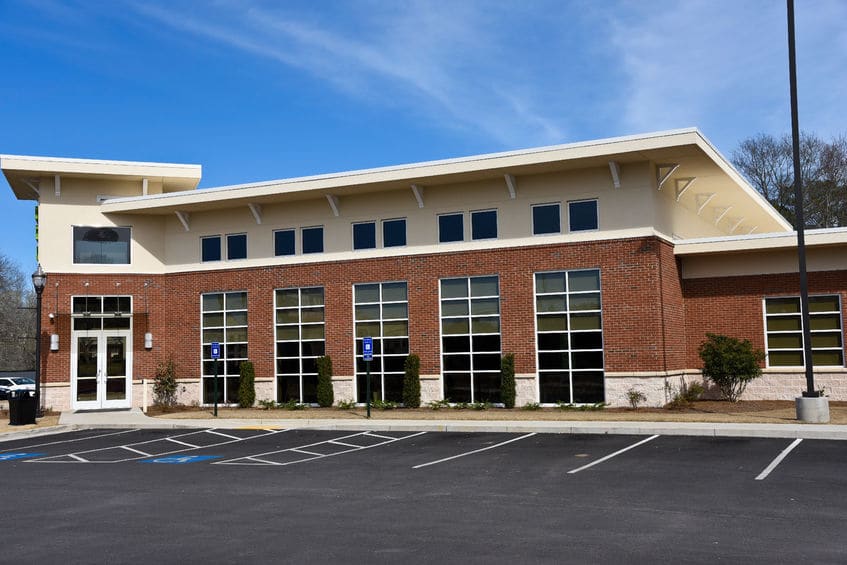
What Is Commercial Insurance and What Does It Cover?
If you’re going to do business, insurance is a fact of life. Insurance is the means by which you protect yourself both from disaster and from liability while you do business. Pretty much everyone knows what insurance is — after all, if you want to drive a car, you’ve got car insurance. If you need to go to the doctor, you’ll need health insurance. Everyone who owns property has homeowner’s insurance, and many who lease have renter’s insurance.
Commercial insurance is both similar and different to these private forms of insurance. It’s part of the cost of doing business, and while it’s something you hope you’ll never use, when the time comes to call upon it, you’ll be glad you have it. But what exactly is commercial insurance, and how does it work? Let’s learn all about this form of business insurance, and learn what does commercial insurance cover, as well as where you can go to get the right package for your business.
What Is Commercial Insurance?
The simplest answer to the question of what is commercial insurance is that it’s any of a variety of insurance policies that cover businesses instead of individuals. Like personal insurance, not every business has the same needs — a restaurant, for example, has very different risks to protect against than does an art gallery or an auto repair shop.
Many business insurance policies, however, begin with basic coverage such as crime insurance, liability insurance, property insurance and the like. If you have employees, you’ll probably need to carry workers’ compensation coverage, as well as other employee benefits.
What Does Commercial Insurance Cover?
This, in many ways, is the million dollar question: there’s no easy answer to the question of what does commercial insurance cover. That’s because commercial insurance covers whatever you need it to cover. Again, because each business has different individual needs, each policy will be quite different. There are literally dozens of different kinds of commercial insurance that you may need for your company.
Common overall categories of business insurance include property insurance, liability insurance, workers’ compensation insurance and employee benefits. These are the general varieties that most companies need to carry to engage in operations. Other companies that deal with creative issues, patents and the like may want to carry umbrella coverage that protects against lawsuits. Still others that have valuable property may need to carry special insurance to cover works of art, jewels and other valuables.
What Is Commercial Liability Insurance?
When you run a business, you always run the risk of liability. In a restaurant, someone can trip and fall or have an allergic reaction. In a construction or auto repair shop, customers are in danger from heavy equipment malfunctions. If you work with chemicals, environmental hazards are always a danger. When your customers or even innocent passers-by are injured on your property, they can file a lawsuit to get compensated for those injuries. Your liability insurance is in place to cover you when this happens. It’s also sometimes called commercial general insurance, or commercial general liability insurance.
When someone files a lawsuit against you, be it for an injury or because you’ve caused them harm in some other way, the damages to your business can be devastating. It can cause you to go bankrupt due to having to pay out huge sums of money. Liability insurance protects you by paying out that damage so that you don’t have to go out of business trying to do so.
What Is Commercial Umbrella Insurance?
Commercial umbrella insurance is a supplemental insurance policy. That is, it’s kind of an add-on to liability insurance, or to many other kinds of insurance policies. It’s a form of insurance that exists to kick in when you max out another kind of insurance policy. For example, if you get sued for $500,000, and your liability insurance only covers you up to $150,000, your umbrella insurance policy can kick in to cover the rest, up to its own limits.
Businesses carry umbrella insurance to protect against catastrophic loss, and it can be tied to your auto policy, general liability, employer liability or other kinds of insurance. It allows you to be covered in excess of your normal policy limits, kicking in when needed, and provides protection against claims that aren’t covered by your existing policies.
What Is Commercial Insurance in Healthcare?
Most of us, when we get jobs, hope that our employer is going to offer health coverage, dental, vision and the like. This is commercial health insurance. Commercial health insurance is something of a strange animal — it provides private healthcare to your employees, but it’s referred to as commercial insurance because it’s provided by you, the business. It’s also sold by for-profit insurance carriers.
In short, any form of healthcare that’s not provided or maintained by the government can be considered commercial insurance. The level of commercial insurance you offer to your employees will depend on a number of factors — the cost of the package that you have to pay for, the number of employees you have and the level of care you want to provide.
What Is Commercial Crime Insurance?
Commercial crime insurance covers organizations that want to protect against criminal activity. This can cover a wide range of situations: employee dishonesty, forgery, computer fraud, funds transfer fraud, money and securities, and other forms of crime that can impact your company.
For many companies, business crime represents a significant danger and liability. Companies are estimated to lose over $400 billion every year just from fraud and abuse. Small businesses are the most potentially vulnerable, because they have a reduced capacity to enact security policies and because they are in a position where they’re forced to trust their employees more. Further, these criminal activities aren’t covered by general business insurance.
What Is Commercial Package Insurance?
Commercial package insurance, or a commercial package policy, is a packaged insurance policy which combines coverage for multiple issues, including property risk, liability and others. Usually, when you buy commercial package insurance, you’ll work with your agent to build a specific package that’s designed to cover your exact needs.
Some companies offer one-size-fits-all packages, but these can be problematic. Too many businesses grab an easy combo package and only later find out that it won’t provide all the coverage they need. When the time comes to buy commercial insurance, you want to work with a company that will make sure you have all the coverage you need in a package that’s perfect for your company’s needs.
Harris Insurance
Running a business in today’s climate carries a lot of risk, and the right insurance coverage can literally be the difference between success and bankruptcy. You need an insurance provider that will set up the perfect package for your needs. At Harris Insurance, we provide specialized packages designed to help you cover the risks inherent to your specific business.
If you’re interested in more information about what is commercial insurance and what does commercial insurance cover, or if you’re ready to start shopping for your package, we’re ready to help. Read a bit more about what we do, and get in touch to get started today!




